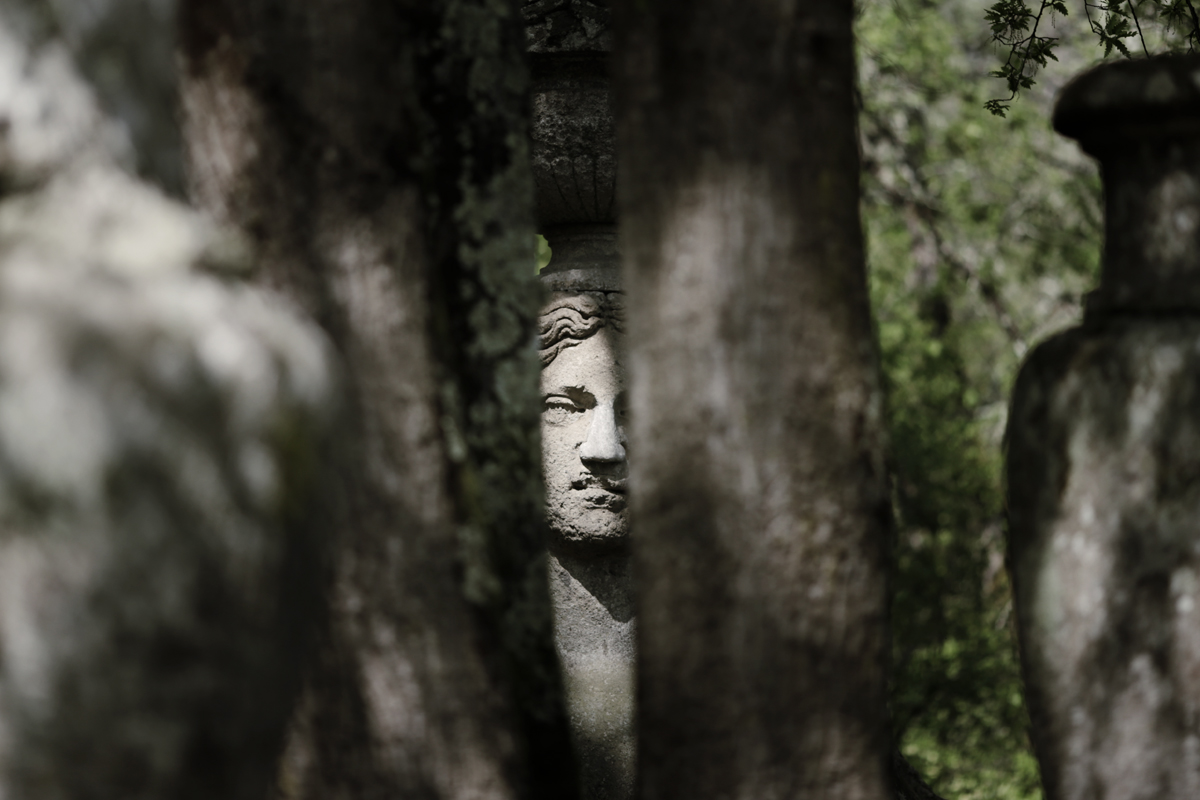Giulia Pergola
What you call Italy is a stone garden to my eyes.
This is its strength, its beauty, and its tragedy. This is its fascination, its unchanging essence, the heart-wrenching form of its destiny.
In this history, which dominates and exceeds us, emotionless to our stories, to our little urgencies, which are the most authentic and sincere images of our life exactly because of their transience, I’ve never found my place.
The photographic project The stone garden by Michele Pergola is the tragic acknowledgment of an existential condition that has become unsustainable. The dissolution of that fertile relationship between man and History has dried up the garden in which we silently wander, and which from flourishing, as it used to be, has turned into an icy non-place where the alienation crystallizes every vital impulse.
According to a progressive disconnection between form and substance, Michele Pergola leads us into a reality and a History in which men were able to be fully integrated; the outrageous figures of the Sacro Bosco (Sacred Wood) of Bomarzo welcome and let themselves welcome into an intricate web of references, in which dialogue with History remains vivid in a cheerful confusion of colors and textures.
The Renaissance spark still shines of its own light and brings us back to a wonderful and monumental past in which each image was open. The humanity of those stone monsters is manifested through their alchemical fusion with the flourishing garden where they are immersed.
The busts that invade the spaces of the Gianicolo are definitely more solitary and clumsy; their authority seems to be paradoxically contradicted by the myriad of medals that crowd their uniforms, but also by mustaches and beards that soon will return to fashion.
These figures are lonely in a landscape that silently runs away and becomes an abstract scenery yet able to imprison these ridiculous men with mustaches in a suspended and alienating atmosphere.
The stone begins to emerge in its deadly nature.
The elegance of the tragedy, the interruptions of a salvific dialogue manifest themselves in the deformity of the athletes of Stadio dei Marmi. These muscular stone men live together their material condition and their (interrupted) rush towards transcendence. They don’t need any setting, their space is white, muted, deprived of any substance; the flatness around them is violently broken by their physical decline that emerges through those brutal bodies covered with moss and mold.
The careful investigation conducted by the photographic lens shows on one hand an ontic deficiency, the inadequacy of Dasein, which our neglected children yearn to; on the other hand the reality of drama which here becomes a laconic catastrophe.
The suspended atmospheres, through which these photos lead us, are a tangible sign of a previous illness, a latent discomfort against a History that has not been able to redeem itself.
These stretched nerves, these reptiles with baroque spines, are nothing more than a desperate lack of communication.
The metaphysical stone garden described by Michele Pergola is an abstract and little reassuring area in which to advance. It is the house where we do not feel at home, the house we have abandoned and, in turn, doesn’t want to receive us anymore; it’s the Unheimlich that comes back.
A blood bond inhumanly truncated.
A garden (made) of flowers, shrubs and trees if left to time carelessness can turn into a decrepit and, in some cases, horror space; flowers give way to brambles, green to the brown gloom, tenderness to roughness of the rotten. But it’s still an evolutionary movement, a wrong progress, maybe, but denouncing its own existence.
A stone garden instead, if not looked after, if doesn’t see traces of compassionate inhabitants walking through its spaces, remains isolated and contracted in its rigor mortis. Eternal and still, it slowly takes on the appearance of a stone desert; the desolation that crosses it is deprived of any vitality, but also of any tension towards death. There’s no dynamism because there’s no perturbation.
A stone garden must be necessarily inhabited in order to capture its splendor; it must be loved, cared for and respected in its seemingly hostile yet so elegant materiality.
Once again, love is needed.
Photographs belong to the photographic project The stone garden, by Michele Pergola.
The photographic project The stone garden has been exhibited at a recent personal exhibition by Michele Pergola at Associazione Culturale Canova22 in Rome, in February and March 2015. Catalogs have been printed in limited edition for the exhibition.
Currently, the project continues to grow, after including the series of Sacro Bosco of Bomarzo and the Gianicolo.
www.michelepergola.com/
www.facebook.com/michelepergola975












